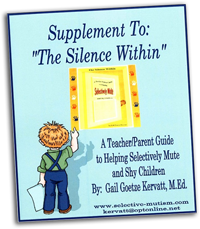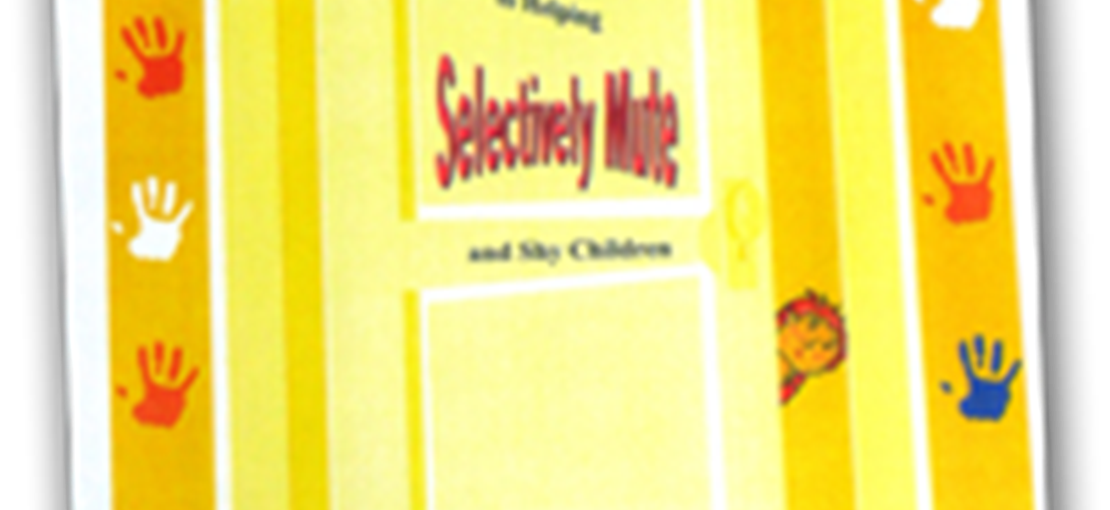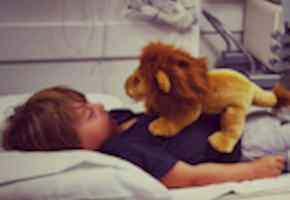Excerpt of an Article, By Gail Kervatt, M.Ed.
 Selective mutism is a complex psychological disorder with an unknown origin. It is a widely misdiagnosed social phobia. Generally, it is called shyness for several years until a child enters school and does not function verbally in school and most social situations outside of school. Parents and teachers become very concerned and seek further assistance and diagnosis. These children have the ability to speak and understand language, develop age appropriate skills, and function normally at home with most family members. However, if the behavior lasts for a period of time, it becomes a learned pattern and is quite difficult to overcome, because the longer a child is silent, the more entrenched the behavior becomes.
Selective mutism is a complex psychological disorder with an unknown origin. It is a widely misdiagnosed social phobia. Generally, it is called shyness for several years until a child enters school and does not function verbally in school and most social situations outside of school. Parents and teachers become very concerned and seek further assistance and diagnosis. These children have the ability to speak and understand language, develop age appropriate skills, and function normally at home with most family members. However, if the behavior lasts for a period of time, it becomes a learned pattern and is quite difficult to overcome, because the longer a child is silent, the more entrenched the behavior becomes.
What are the causes of Selective Mutism?
A more understandable and descriptive term might be Anxiety Induced Mutism. The question is what causes the anxiety. It is probably one or a combination of the following criteria:Temperament, also called shyness, has been found to be genetically inherited. Anxiety in adults often has its beginnings in childhood shyness. Shyness can be triggered by certain cues as: authority figures, one-on-one interactions, intimacy, strangers, having to take action in a group setting, and initiating social actions. Is there a predisposition to shyness? Research with infants conducted by Jerome Kagan, Nancy
Snidman and their colleagues at Harvard has shown that physiological differences between sociable and shy babies show up as early as two months.
 What happens in the brain?
What happens in the brain?
The amygdala is associated with specific stimuli and produces fear. The background factors related to the conditioning stimuli is known as contextual conditioning. The contextual conditioning occurs more slowly and lasts longer in shy people and is experienced as anxiety. The hypothalamus and brain stem then trigger the nervous system and physiological symptoms occur such as trembling, increased heart rate, muscle tension, and blushing.
Environmental triggers that can aggravate a shy temperament are:
Inconsistent or unreliable parenting, poor relationships with parents or Siblings, family conflict, frequent criticism, stressful school environment, criticism for not overcoming fears, few family friends, few family social activities, lack of modeling of social skills, and over-protected children
Is it caused by trauma? In the majority of the cases - NO
Is it caused by abusive parents? NO While cases of mutism have occurred as a result of a child being abused or emotionally or physically traumatized, it seems to be very rare.
Is the child just being stubborn or oppositional? No - These behaviors are a reaction to the anxiety and thus, the inability to speak.
Are the incidences gender specific?
The gender ratio is slightly higher on the female side with about 1.9 females (58%) to one male (42%: Baltaxe, 1994).
What are the best treatment options available?
Cognitive Behavior Modification - Group simulated exposures to feared situations - Homework to face feared situations - ex. Hold a conversation for several minutes to meet that week's goal.
Anxiety management - Exercises to learn to control maladaptive thoughts
Social skills training - Assertiveness and negotiation, relaxation techniques
Medication- SSRI's (Selective Serotonin Reuptake Inhibitors) - Prozac, Zoloft, Paxil -
Much research still needs to be done concerning medication. The National Institute of Mental Health has established the Research Units in Pediatric Pharmacology (RUPP) to evaluate medications for use in children. Studies vary widely and even though pharmacological intervention is widely advocated as a cure-all, the relapse rate is 50% within six months of stopping medication. (Michelle Cottle, The New Republic, Aug. 1999) Many parents have reported side effects of medication and there is no completed study to determine the long term effects of the types of medication used.
Some strategies that are useful:
Stimulus fading is a method of providing the child with an anxiety free setting. The teacher and the child would start the sessions in a place wherethey could establish a good rapport. Nonverbal activities such as shared journal writing, joint story development, or computer games may ensue.
Eventually, one more child is added to the group and speech oriented activities such as question/answer games that only require yes or no answers would be used. When the selectively mute child becomes comfortable with the new child, and this may be a child to whom he/she secretly speaks to, another child is added. This procedure continues until there is a small expanded group. The process may take months to develop and the group size may fluctuate depending upon the selectively mute child's needs and progress. It is important not to expand the group too slowly or too quickly.
Behavior modification is a method of providing incentives and positive reinforcement for producing speech. It could include the cooperative development, between the child and teacher, of quarterly and weekly goals, activities to initiate the goals, and rewards for completing the goals. The activities would be speech centered, for example, games which require yes and no answers moving toward one word answers, puppet shows, singing activities, tape recordings, and use of the telephone. Rewards may be inexpensive prizes or as simple as computer time or "get out of homework" coupons. The rewards should be developed with the child's input so as to be of motivational interest.
Other behavioral interventions that have been employed are systematic desensitization and guided imagery, where scenes depicting situations that have caused anxiety are coupled with muscle relaxation, shaping, in which the child is first reinforced for making nonverbal responses, then for making certain sounds, and finally for speaking at least one word, audio and video feedback or self-modeling, through repeatedly playing an audio tape or viewing a video in which the child is actively speaking, which desensitizes the child's reaction, reinforcement sampling, which allows the child to play with an object prior to earning it by speaking, and even escape/avoidance procedures, which require the child to make a response before being allowed to leave the setting. Some of these interventions appear to be harsh and are used only by therapeutic clinicians..
School personnel must be careful in employing some of them. Often, the escape/avoidance procedure causes regression and generally should not be used.
The best approach seems to be a multimodal approach in a school based treatment plan.
What is the prognosis?
The early onset during preschool years suggest a developmental problem that can be directly addressed in early intervention efforts. The goal is to intervene during the child's developmental years. The longer the disorder continues the more engrained it becomes and the more difficult to treat. Clinicians generally treat older children and adults with a combination of behavior modification and medication. In older children and adults the SM has become partly a learned behavior and child or adult feel that it would be too embarrassing to speak to persons to whom they have never spoken.
Click here to for more information on Selective Mutism and also to get a copy of The Silence Within - A Teacher/Parent Guide to Helping Selectively Mute and Shy Children.
Click here to read Part II: Selective Mutism - Tips for Parents


 What happens in the brain?
What happens in the brain?



Add A Comment
Thank you for your comment.
Sorry! There was a problem with your comment submission. Please try again.
Comment
Allowed HTML: <b>, <i>, <u>, <a>
Comments
Thank you for your comment.
Sorry! There was a problem with your comment submission. Please try again.
Thank you for your comment.
Sorry! There was a problem with your comment submission. Please try again.